24 July 2013
If you choose to believe me, good. Now I will tell how Octavia, the spider-web city, is made. There is a precipice between two steep mountains: the city is over the void, bound to the two crests with ropes and chains and catwalks. You walk on the little wooden ties, careful not to set your foot in the open spaces, or you cling to the hempen strands. Below there is nothing for hundreds and hundreds of feet: a few clouds glide past; farther down you can glimpse the chasm’s bed.
Italo Calvino, Invisible Cities (chapter V: Thin cities, 5)
As I approach Rietveld’s pavilion at the Giardini, my gaze rests on the animated, broken walls of the building’s surface. The lattice of horizontal and vertical lines of the large central windows expresses a typically neoplastic rigor and geometry—the cadenced rhythm of the architecture of the façade reminds me of the dynamic vitality of the grid of colored shapes in Broadway Boogie-Woogie, one of Piet Mondrian’s last paintings. The tree in front of the entrance, on the other hand, makes me think of one of the Dutch artist’s earliest works, The Gray Tree: here, the arched trunk and leafless branches blend into a dirty, leaden sky. It is a tormented work, in gloomy tones—light years away from the reassuring mathematical harmony of his subsequent De Stijl production.
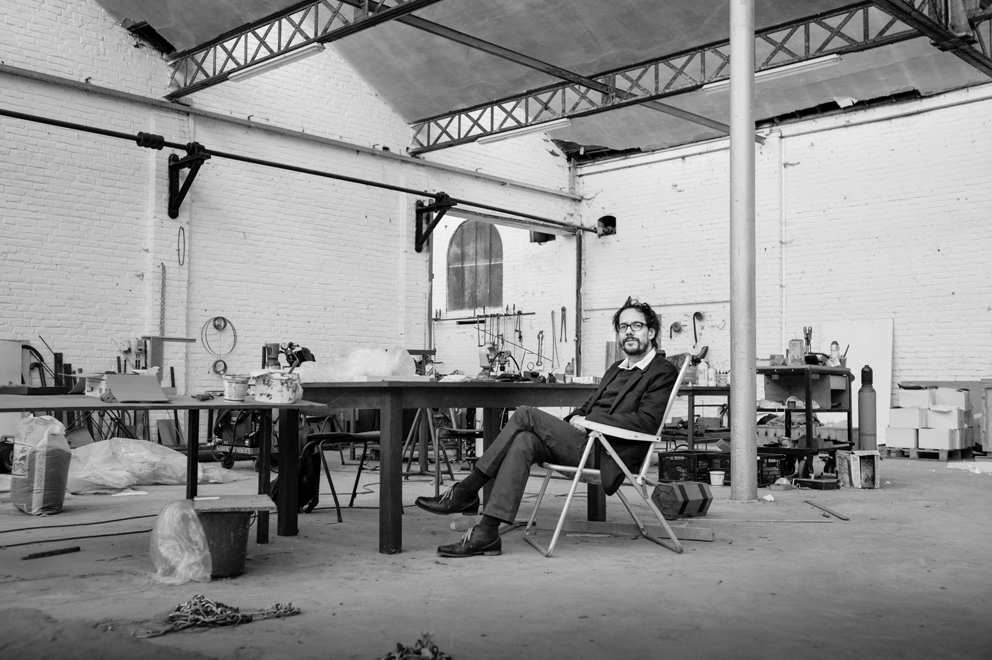
Mark Manders. Photo: Cedric Verhelst
Fake sheets of newspaper plaster the windows of the pavilion’s entrance: they bear all the words in the English dictionary, each cited just once; nebulous and indistinct images—close-up photographs of a formless dusty material—accompany this linguistic assemblage. It is with this work that Mark Manders introduces the visitor to his retrospective, entitled Room with Broken Sentence: the word “broken” heralds a rupture, a trauma, an interrupted situation. It may allude to the broken rhythm of the pavilion’s neoplastic architecture—and thus to the modernist geometric grid as well, composed of truncated lines, cut off and then turned into orthogonal segments. Or the interruption to which Manders is referring is nothing but the one inherent in the discontinuous character of language—an irregular flow of words in fits and starts, unable to represent the continuous appearance of the world.
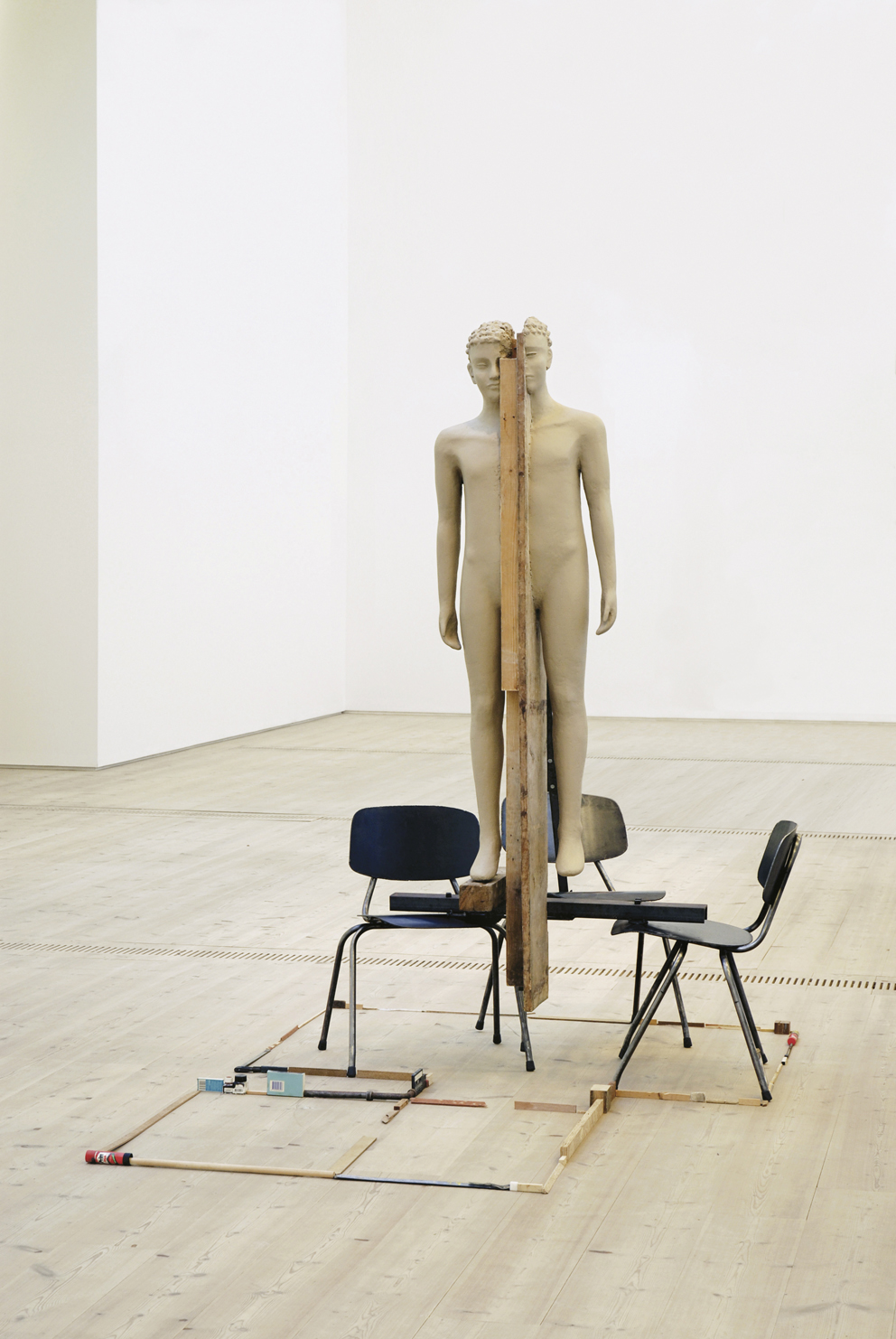
Mark Manders, Unfired Clay Figure, 2005-2006. Dakis Joannou Collection, Athens.
Inside the pavilion, interruptions and fractures mangle the surfaces of the sculptures: women’s heads sectioned by wooden boards act as counterpoint to a desk on which stands an enormous resin head rent by vertical beams; alongside, there is a table in the form of a crossbow, on the point of shooting a bolt that looks like a maimed caryatid. These inserts, these material prostheses, do not, however, give rise to discords or dissonances: the fracture generates symmetry, equilibrium—just as in van Doesburg’s paintings or Rietveld’s architecture.
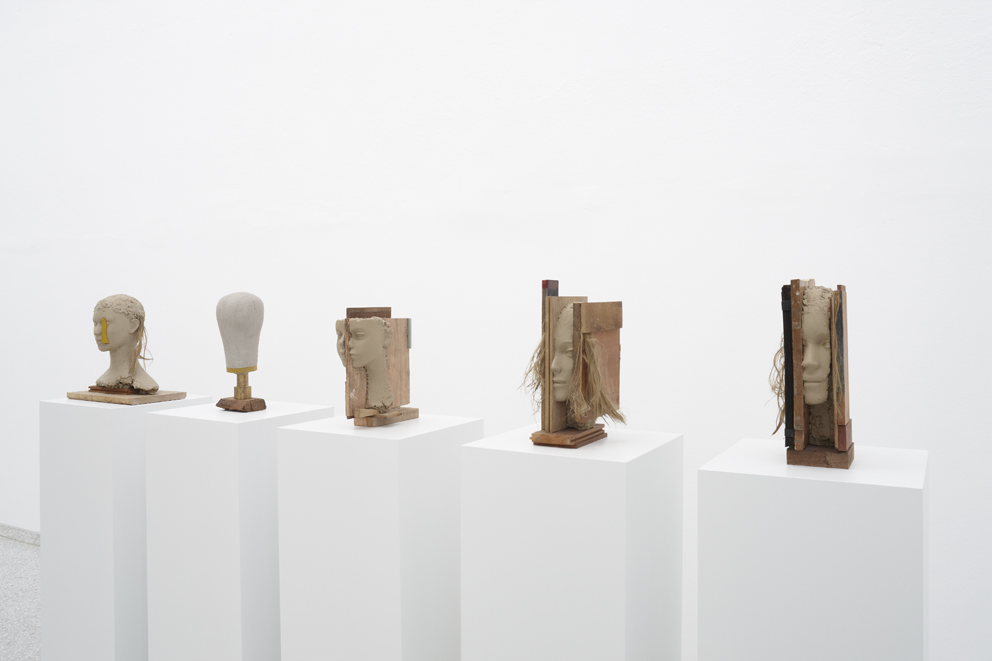
Mark Manders, Girl with Yellow Vertical, 2013; Head Study, 2012-2013; Head Study, 2012-2013; Girl Study, 2013; Girl Study, 2013. Courtesy: Zeno X Gallery e Tanya Bonakdar Gallery. Photo: Jan Kempenaers
I little further on, I come across a sculpture composed of two pieces of copper wire dangling from nails. The ends of the wires hang downward, as if subject to an intense force of gravity: in reality, it is the artist who has laboriously bent the metal rods, in order to give the objects an elastic, malleable appearance—a contemporary version of Dalí’s soft watch. The name the artist has given the work is Short Sad Thoughts: they are the tracings of these thoughts, bent downwards like two small, slender tears. The whole of Mark Manders’ art sets out to materialize what exists only in the mind or in some other hard-to-get-at place. His is a sculpture of dreams, thoughts and inner images: this is precisely what gives them a suspended, enigmatic, almost perennial character—like Mondrian’s geometric compositions, capable of revealing the invisible structure of the universe and thought.
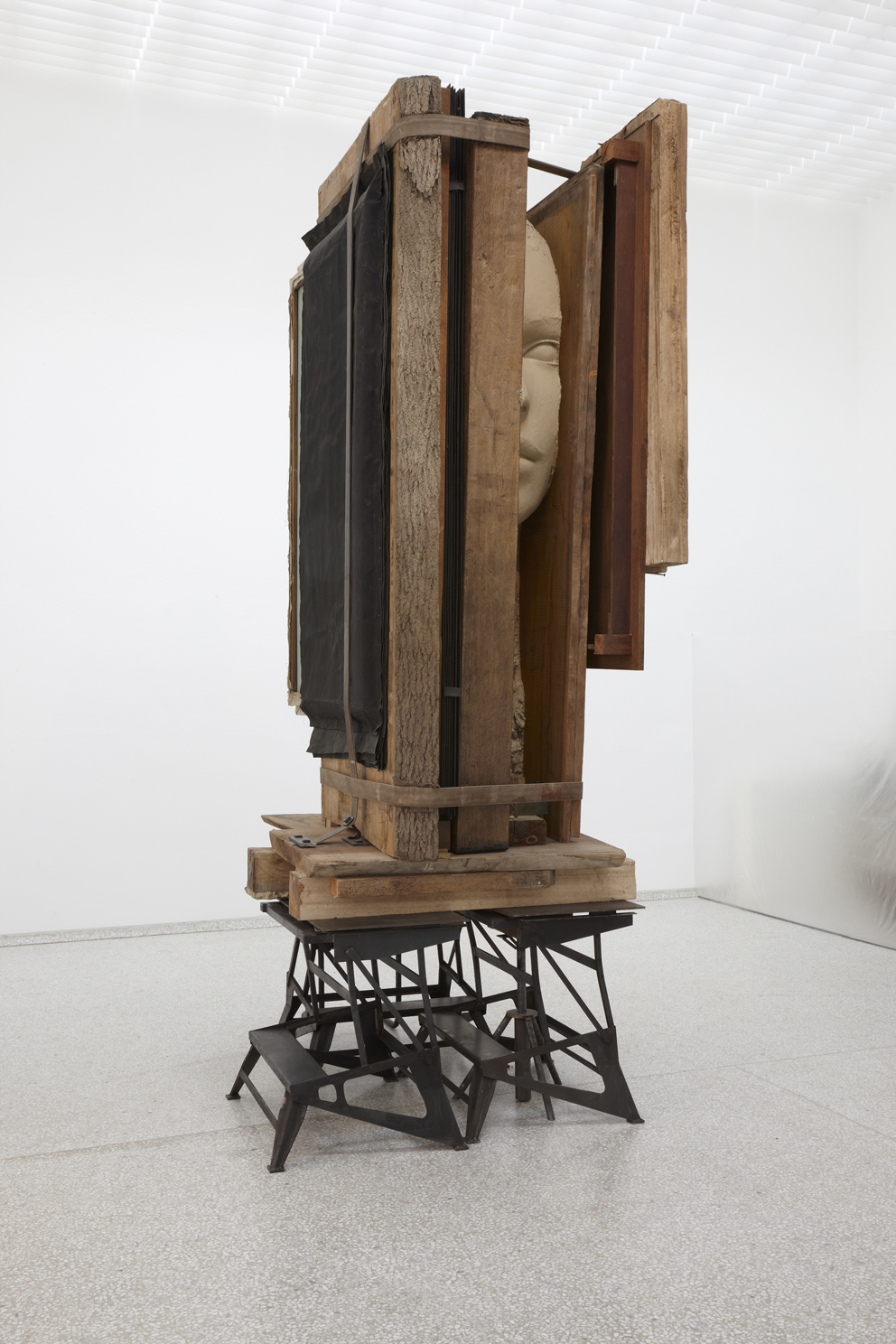
Mark Manders, Working Table, 2012-2013. Courtesy: Zeno X Gallery e Tanya Bonakdar Gallery. Photo: Jan Kempenaers.
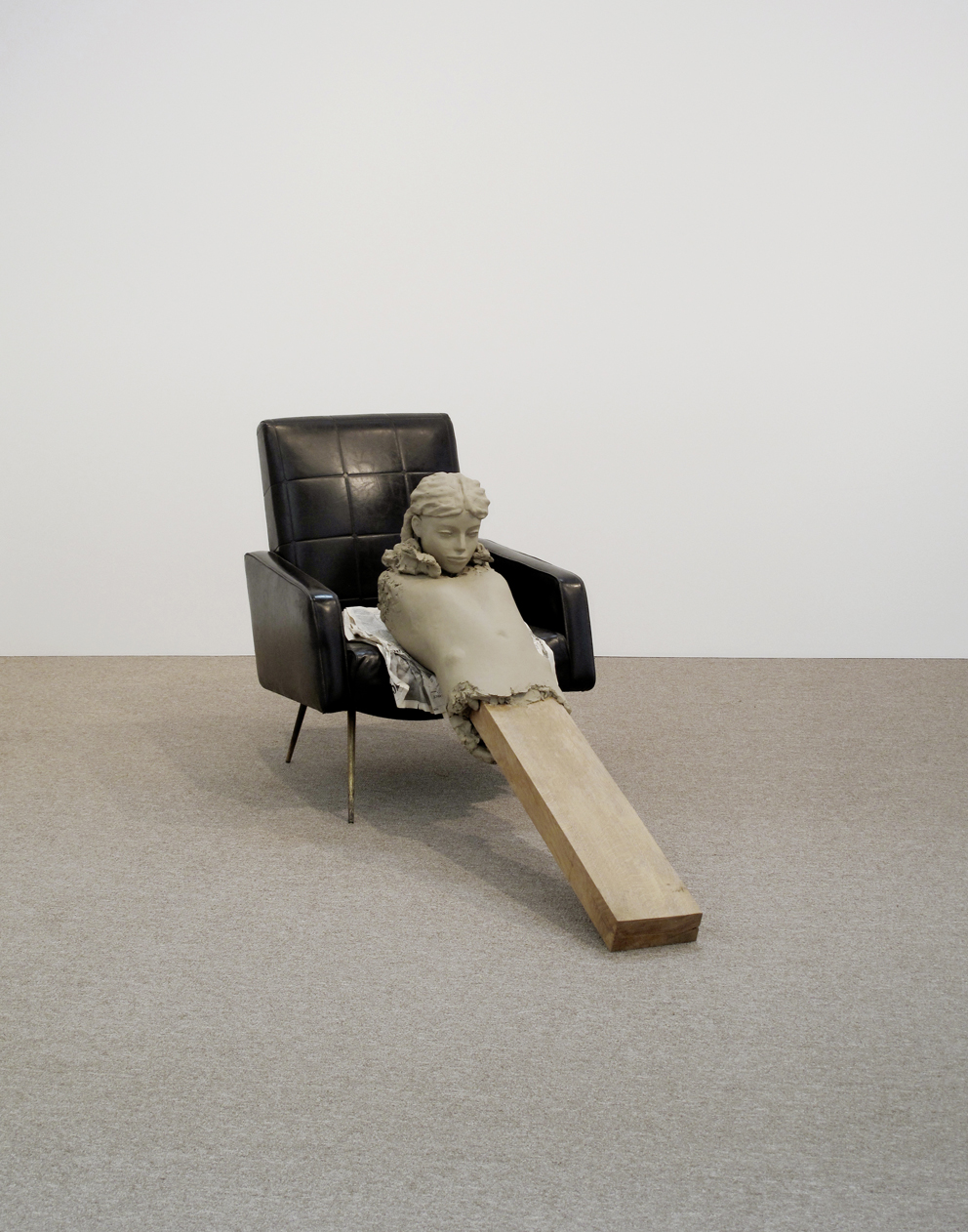
Mark Manders, Ramble Room Chair, 2010. Courtesy: Zeno X Gallery, Antwerp.
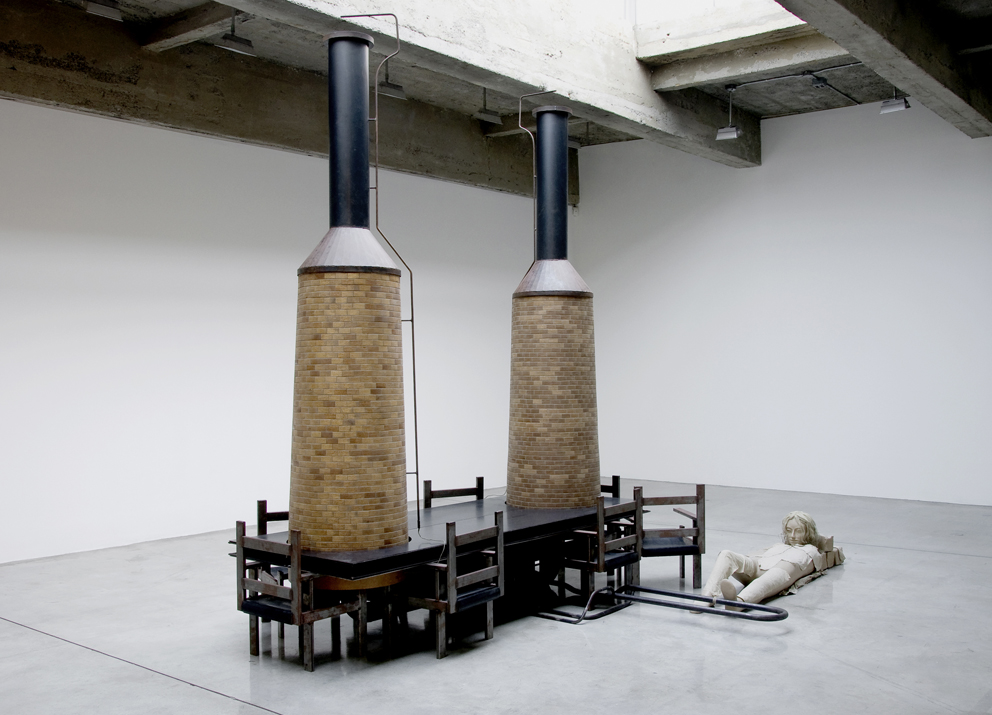
Mark Manders, Room with Chairs and Factory, 2002-2008. Collection: The Museum of Modern Art, New York.
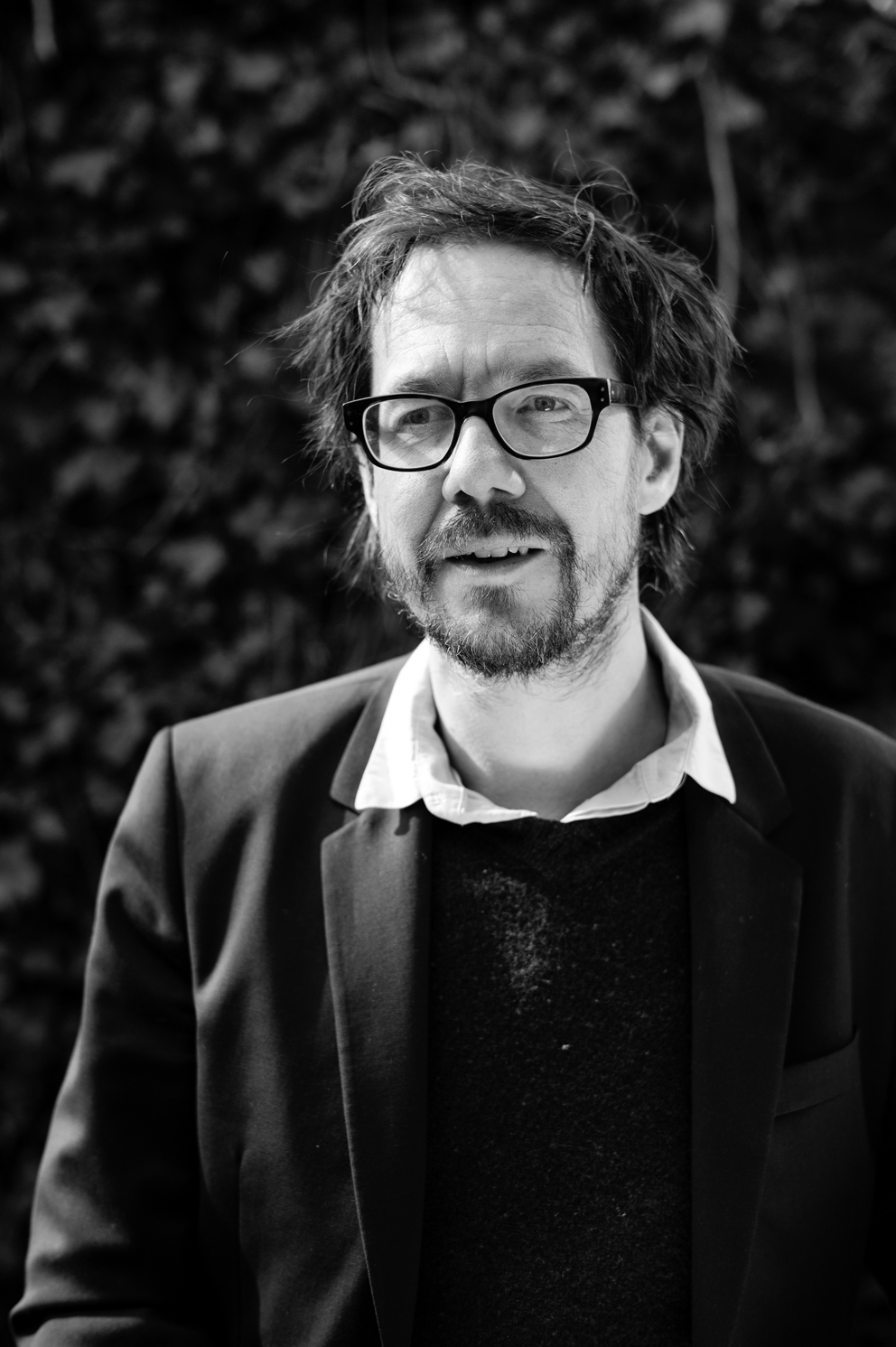
Mark Manders. Photo: Cedric Verhelst
Follow Federico Florian on Google+, Facebook, Twitter.
By the same author:
ArtSlant Special Edition – Venice Biennale
Notes on ‘The Encyclopedic Palace’. A Venetian tour through the Biennale
The national pavilions. An artistic dérive from the material to the immaterial
The National Pavilions, Part II: Politics vs. Imagination
The Biennale collateral events: a few remarks around the stones of Venice